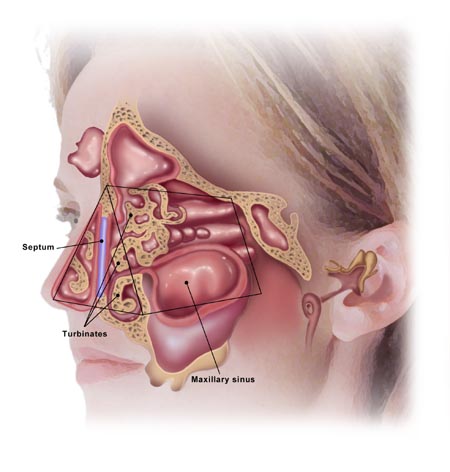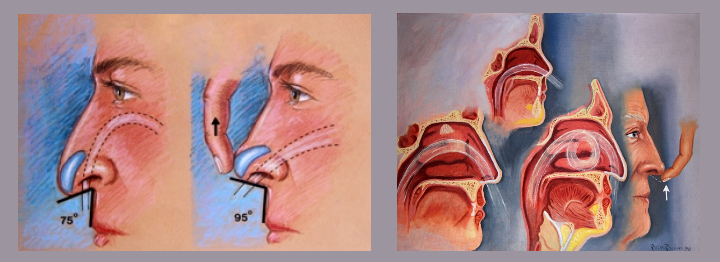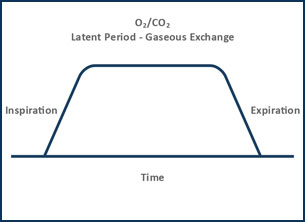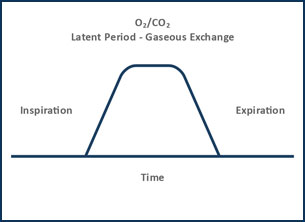POOR BREATHING ERODES GOOD HEALTH, AND CONTRIBUTES TO CHRONIC FATIQUE

Rhinoplasty – Functional Anatomy
Your nose is the interface between the atmosphere and your lungs. It’s a filter, a temperature regulator and a humidifier designed to sustain life by ensuring a flow of processed air to your lungs. This rhythmic in and out process through the nose energizes and detoxifies the body. Nasal abnormalities, or injuries to the air channels disrupt and restrict this cycle. We then switch from nose breathing to mouth breathing. Shallow and irregular mouth breathing contributes to chronic fatigue that may eventually undermine your health. Symptoms of a functional breathing problem may include –
- A chronically stuffy or blocked nose.
- A dry, irritated throat.
- A loss of smell or taste.
Functional surgery helps to re-establish normal breathing by restoring a damaged or deformed nose to its former natural shape and function.
MOUTH BREATHING VERSUS NOSE BREATHING
During a single day, we inhale and exhale about 17 000 times, breathing in some 100 cubic meters of air. Within 1/15 of a second, less than a blink of the eye, the nose can warm freezing air from minus 50 degrees Celsius (or a stifling hot 50 degrees) to a comfortable 37 degrees. It does this in less than 8 cm, and during this brief moment, it also humidifies and purifies the air.
VALVES
Two sets of valves in the nose regulate nose breathing. The rims of the nostrils form the first set. A little higher, the mid-vault area of the nose (approximately the mid-point of the bridge), we find the second set. These valves regulate breathing by resisting the airflow through the nose sufficiently long enough for the internal nose organs to humidify and filter the air, and adjust the temperature to a comfortable level. Without this resistance, we cannot oxygenate the body efficiently. Weak resistance allows the air to reach our lungs prematurely; too much triggers mouth-breathing.
Correct breathing through the nose proceeds over a three-phase cycle – the inspiratory, latent and expiratory phases. The inspiratory phase begins with the inflow of air through the nasal channels of the nose. We pause at the latent phase when the air reaches the lungs. The latent phase allows the body to exchange stale carbon dioxide for fresh oxygen. We then enter the expiratory phase; we breathe out.
CRITICAL POINT
If the airflow through the nose encounters too much resistance we switch to mouth breathing. Mouth breathing shortens the latent phase of the oxygen exchange cycle; our blood oxygen levels drop; we develop hypoxia. Hypoxia drains energy; we feel ‘flat’ and fatigued. The next significant symptom is poor concentration and memory loss; and eventually depression. Even more worrying, the heart compensates for oxygen loss by working harder. This can induce congestive cardiac failure – CCF or a heart attack.

A drooping nose disturbs the airflow through the channels of the nose. For optimal breathing the angle of the base of the nose to the top lip should be less acute – about 95 degrees.
TYPES OF FUNCTIONAL SURGERY
TURBINATE SURGERY
Enlarged turbinates restrict the flow and quality of air through your nose. Trimming the turbinates surgically could resolve this. But since trimming could affect the external shape of your nose, we would maintain the correct, cosmetic proportions of your nose while doing so.
SEPTOPLASTY
We recommend septoplasty to widen, or straighten the air channels on either side of the nasal septum (the partition between the two air channels). A hole in the septum also disrupts normal airflow. If not too large for surgical repair, we will repair the hole with septal cartilage harvested from your nose. If we can’t harvest cartilage we might use lyophilized or freeze dried ‘donor’ cartilage to repair the damage.
THE NOSE CLINIC DIFFERENCE
Shape and function often go together. We understand this, and unlike general cosmetic surgeons (not trained in functional nasal surgery), we can work with both. This ability to work with both the internal functional aspects of the nose and the external aesthetic shape of the nose differentiates the Nose Clinic from the work of general cosmetic surgeons. We have the qualifications, skills and experience to perform functional surgery and to refine the shape of your nose. This unique capacity enables the Nose Clinic’s specialist surgeon to combine functional surgery with a plastic surgery refinement. There is no need to visit a second surgeon.
Make an Appointment!





